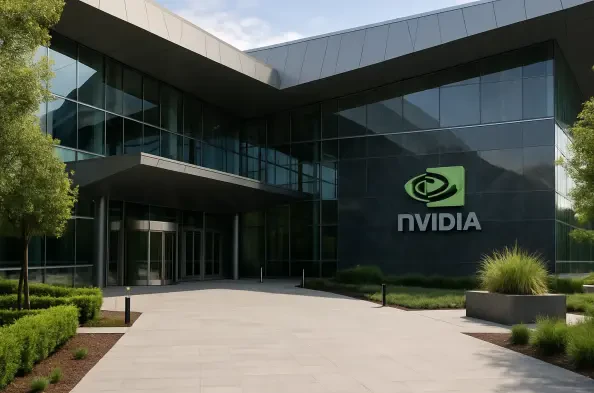Imagine a world where artificial intelligence systems can process data at speeds unimaginable just a few years ago, slashing the time needed to train complex models from weeks to mere hours. This is no longer a distant vision but a tangible reality with Nvidia’s latest innovation, the Blackwell AI Chips. Designed to push the boundaries of computational power, these chips stand at the forefront of a technological revolution, promising to redefine how industries harness AI. This review delves into the intricacies of the Blackwell platform, exploring its groundbreaking features, real-world impact, and the challenges it faces in a highly competitive and geopolitically charged landscape.
Unveiling the Powerhouse of AI Technology
The Blackwell AI Chips mark Nvidia’s most advanced foray into GPU technology tailored for artificial intelligence and machine learning workloads. Built to handle the exponential demands of modern AI applications, these chips represent a significant leap from their predecessors, catering to everything from data center operations to edge computing environments. Their introduction underscores Nvidia’s commitment to maintaining leadership in a market where computational efficiency is paramount.
Positioned within a fiercely competitive arena, the Blackwell platform emerges as a response to the growing need for hardware that can keep pace with rapidly evolving AI algorithms. Nvidia, long recognized for pioneering GPU architectures, has strategically developed this technology to address the escalating requirements of generative AI and big data analytics. The significance of these chips extends beyond mere performance, as they play a pivotal role in shaping the broader tech ecosystem by enabling faster, more efficient AI solutions.
The relevance of Blackwell chips cannot be overstated in an era where computational power often dictates the pace of innovation. As industries increasingly rely on AI for transformative applications, Nvidia’s latest offering promises to be a cornerstone in driving progress across multiple sectors. This review aims to unpack the layers of this technology, providing a comprehensive look at its capabilities and implications.
Diving into Features and Innovations
Unmatched Computational Might
At the heart of the Blackwell AI Chips lies their extraordinary processing speed, reportedly up to 30 times faster than earlier generations. This dramatic improvement translates into significantly reduced times for training AI models and executing inference tasks, a critical advantage for developers working on complex projects. Such performance empowers organizations to iterate and deploy AI solutions with unprecedented agility.
The architectural advancements behind this speed are equally impressive, with enhanced transistor density and superior energy efficiency setting new industry standards. These improvements ensure that the chips not only deliver raw power but do so with a reduced environmental footprint, addressing a growing concern in high-performance computing. The design prioritizes sustainable operation without compromising on output, a balance that is vital for long-term adoption.
The implications of this computational leap are profound, particularly for workloads involving intricate neural networks or massive datasets. Industries that rely on real-time data processing or simulations can now achieve results that were previously out of reach, opening doors to innovations that redefine operational capabilities. This performance edge positions Blackwell as a transformative force in AI hardware.
Scalability and Adaptive Design
Beyond raw power, the Blackwell chips are engineered for scalability, making them adaptable to a wide range of applications from sprawling data centers to compact edge devices. This flexibility ensures that the technology can meet the needs of diverse environments, whether powering cloud-based AI services or enabling on-device processing in remote locations. Such versatility broadens the scope of potential deployments.
Compatibility with various software frameworks further enhances the chips’ appeal, allowing seamless integration into existing systems and workflows. This adaptability is crucial for industries with specialized requirements, as it minimizes the need for extensive overhauls when adopting the technology. Nvidia has clearly prioritized ease of implementation, ensuring that the chips cater to a wide array of technical ecosystems.
Real-world scenarios highlight the tangible benefits of this scalable design, such as enabling rapid deployment of AI solutions in dynamic settings like smart cities or industrial automation. The ability to tailor performance to specific use cases ensures that organizations can maximize efficiency while addressing unique challenges. This characteristic underscores the Blackwell platform’s role as a versatile tool for innovation.
Market Dynamics and Recent Updates
The Blackwell platform, unveiled in early 2024, has quickly become a focal point in the AI hardware market, reinforcing Nvidia’s strategic dominance in this space. As demand for AI chips surges—driven by trends in generative AI, autonomous systems, and big data analytics—these chips are poised to meet the needs of a rapidly expanding user base. Nvidia’s positioning reflects a keen understanding of market trajectories and technological imperatives.
Emerging industry trends further amplify the relevance of this technology, with applications in AI continuing to diversify and intensify. The push for more powerful hardware aligns with the increasing complexity of AI models, necessitating solutions that can handle vast computational loads. Blackwell’s introduction arrives at a critical juncture, addressing these demands while setting a benchmark for competitors to follow.
Geopolitical factors also shape the market context, notably through U.S. export controls and policy proposals affecting global distribution. Recent discussions around allowing scaled-down versions of these chips for markets like China, coupled with unique revenue-sharing agreements with the U.S. government, highlight the intricate balance between economic interests and national security. These developments influence Nvidia’s strategic maneuvers, adding layers of complexity to the platform’s rollout.
Transforming Industries with Real-World Impact
Across various sectors, the Blackwell AI Chips are already making waves, particularly in cloud computing where their processing power enhances service delivery for massive user bases. In healthcare, the technology accelerates medical imaging analysis, enabling faster and more accurate diagnoses that can save lives. Similarly, the automotive industry benefits from improved capabilities for autonomous driving systems, pushing the boundaries of vehicle safety and efficiency.
Specific partnerships and deployments illustrate the transformative potential of these chips, with collaborations between Nvidia and leading tech firms showcasing their integration into cutting-edge solutions. For instance, joint efforts in scientific research leverage the chips’ power to simulate complex phenomena, speeding up discoveries in fields like climate modeling. Such examples demonstrate the practical value of this technology in addressing real-world challenges.
Unique use cases further highlight the chips’ versatility, such as their application in cybersecurity for AI-driven threat detection. By processing vast amounts of data in real time, the technology helps organizations identify and mitigate risks more effectively than traditional methods. This capacity to adapt to niche demands reinforces the Blackwell platform’s status as a catalyst for innovation across unexpected domains.
Navigating Challenges and Constraints
Despite their prowess, the Blackwell chips face technical hurdles, notably in managing heat dissipation and power consumption inherent to high-performance computing. These issues pose challenges for maintaining optimal operation, especially in densely packed data center environments where thermal management is critical. Nvidia continues to address these concerns through innovative cooling solutions and design optimizations.
Geopolitical and regulatory obstacles also loom large, with U.S.-China tech tensions impacting the global distribution of advanced AI hardware. Export restrictions and debates over scaled-down versions for certain markets raise questions about accessibility and security risks. These external pressures complicate Nvidia’s efforts to balance market expansion with compliance with stringent policies.
Criticisms regarding potential security vulnerabilities, especially with modified chips possibly aiding adversaries, add another dimension to the challenges. Concerns persist about whether reduced-capability versions still offer significant technological advantages to restricted markets. Nvidia’s ongoing commitment to robust safeguards and transparent collaboration with regulatory bodies aims to mitigate these risks, though skepticism remains among some stakeholders.
Looking Ahead to Future Horizons
The evolution of the Blackwell AI Chips holds immense promise, with anticipated upgrades likely to further enhance performance and efficiency in the coming years. Potential iterations could focus on even greater energy optimization or integration with emerging AI paradigms, ensuring the technology remains at the cutting edge. Such advancements will likely solidify Nvidia’s role as a leader in this domain.
Broader implications for AI development are also on the horizon, as the chips could enable more sophisticated models that push the limits of machine learning capabilities. This might democratize access to high-performance computing, allowing smaller entities to leverage powerful AI tools previously reserved for large corporations. The ripple effects of such accessibility could reshape competitive landscapes across industries.
Long-term societal impacts warrant consideration as well, particularly in balancing innovation with ethical and security concerns. As AI becomes more pervasive, the responsible deployment of technologies like Blackwell will be crucial to prevent misuse while maximizing benefits. This dual focus on progress and precaution will shape how industries and policymakers approach the future of AI hardware.
Reflecting on a Technological Milestone
Looking back, the exploration of Nvidia’s Blackwell AI Chips revealed a technology that redefined benchmarks in performance and versatility, leaving an indelible mark on multiple industries. Their ability to handle complex AI workloads with unmatched speed stood out as a testament to Nvidia’s engineering prowess. Despite facing technical and geopolitical challenges, the platform’s impact on cloud computing, healthcare, and beyond was undeniable.
As a next step, stakeholders should prioritize collaborative efforts to address thermal and power management issues through advanced engineering solutions. Simultaneously, transparent dialogue between tech companies and governments could help navigate regulatory landscapes, ensuring that innovation does not come at the expense of security. Investing in ethical guidelines for AI deployment will also be essential to harness the full potential of this technology.
Finally, the industry must look toward fostering equitable access to such powerful tools, enabling a wider range of organizations to contribute to AI advancements. By focusing on these actionable measures, the legacy of the Blackwell chips can extend beyond technical achievements to create a more inclusive and responsible technological future.






